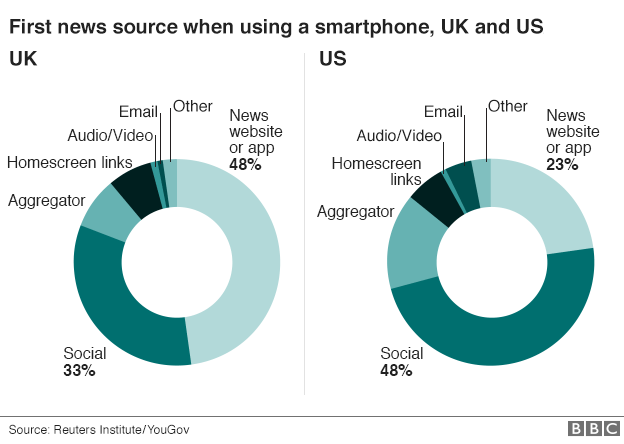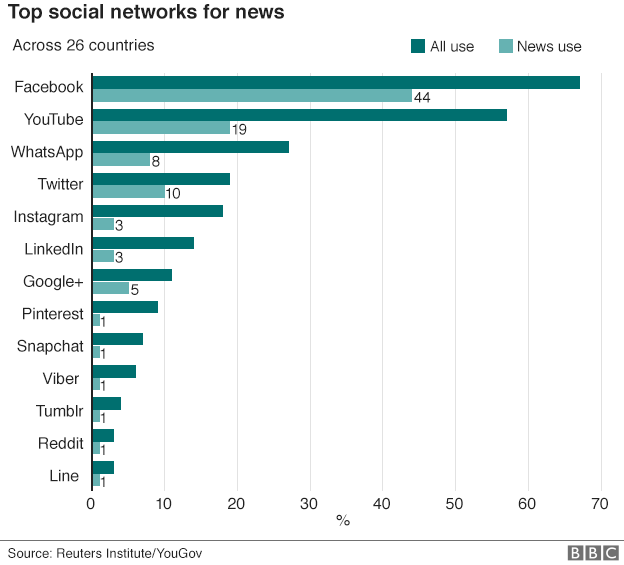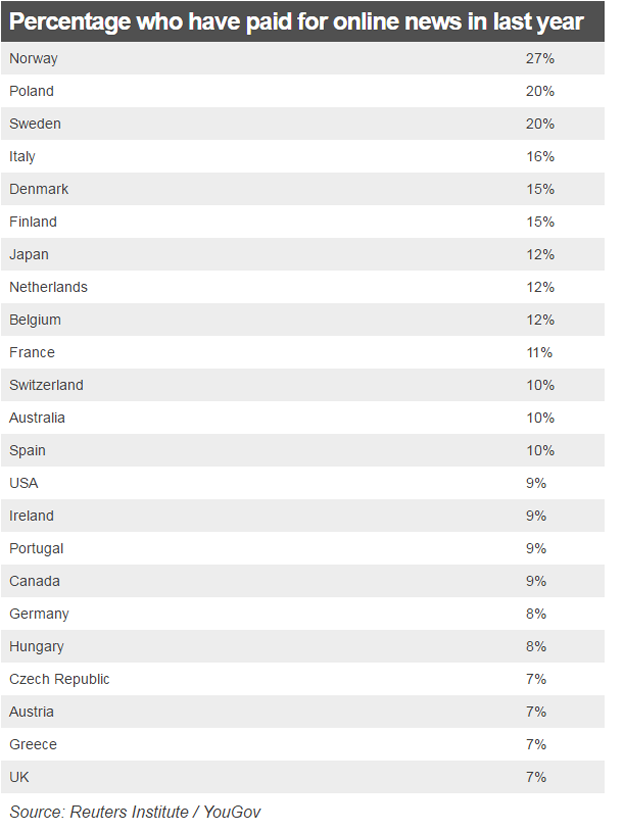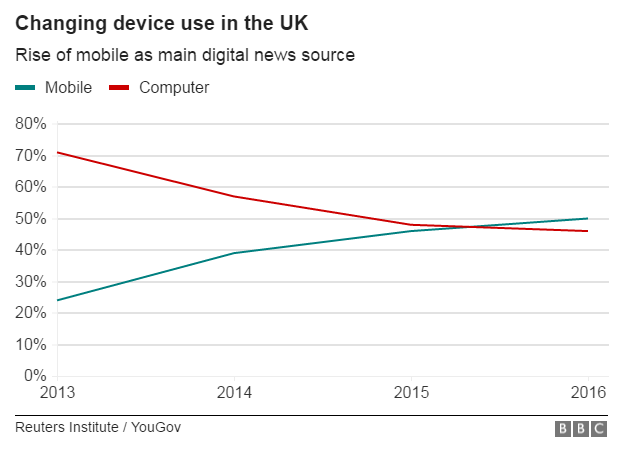Social media 'outstrips TV' as news source for young people
- Published
- comments

Many consumers, especially the young and women, increasingly access news via social media platforms, according to report
Social media has overtaken television as young people's main source of news, according to a report.
Of the 18-to-24-year-olds surveyed, 28% cited social media as their main news source, compared with 24% for TV.
The Reuters Institute for the Study of Journalism research, external also suggests 51% of people with online access use social media as a news source.
This trend and the rising use of mobile phones to access news are undermining traditional business models.

The report, now in its fifth year, is based on a YouGov survey of about 50,000 people across 26 countries, including 2,000 Britons.
In its introduction, the report says "a second wave of disruption" has hit news organisations around the world, with "potentially profound consequences both for publishers and the future of news production".

Analysis: Rory Cellan-Jones, BBC Technology correspondent
For older media organisations struggling to find a profitable path in the online era, there is little comfort to be found in this report.
Under 10% of readers in English-speaking countries have paid anything for online news in the past year - so advertising looks the only sustainable business model.
No wonder, then, that the march of the ad-blockers is seen by some news businesses as a threat to their very survival.
And while there still seems to be a big appetite for news, it is to social-media platforms that users are increasingly turning to find it.
This means Facebook is the most powerful force in global news, potentially offering publishers access to vast audiences but leaving them dependent on the whims of its algorithm.
The good news for the old media is it is still producing far more of the heavyweight news stories read by the online audience, with readers turning to the newcomers for softer fare.
The bad news is that making money out of the expensive business of serious journalism is getting ever harder.


Facebook and other social media outlets have moved beyond being "places of news discovery" to become the place people consume their news, it suggests.
And news via social media is particularly popular among women and young people.
Meanwhile, sales of printed newspapers continue to fall, while consumers remain reluctant to pay much for online news content.
The study found Facebook was the most common source - used by 44% of all those surveyed - to watch, share and comment on news.
Next came YouTube on 19% , with Twitter on 10%.
Apple News accounted for 4% in the US and 3% in the UK, while messaging app Snapchat was used by just 1% or less in most countries.
Facebook has recently been embroiled in a row over whether its trending topics section - which is edited by humans and designed to highlight the subjects being discussed by users around the world - was suppressing stories that supported conservative political viewpoints.
The social media giant strenuously denied the accusations, and an internal investigation found no evidence of bias - but it did make a number of changes, including:
updating terminology in its guidelines to human reviewers
giving more oversight to the review team
no longer relying on lists of external websites and news outlets to assess the importance of topics in stories
News by algorithm
According to the survey, consumers are happy to have their news selected by algorithms, with 36% saying they would like news chosen based on what they had read before and 22% happy for their news agenda to be based on what their friends had read.
But 30% still wanted the human oversight of editors and other journalists in picking the news agenda and many had fears about algorithms creating news "bubbles" where people only see news from like-minded viewpoints.
"People like the convenience of algorithms choosing their news but are worried about whether that would mean they were missing out on key points or challenging viewpoints," said lead author Nic Newman.

The other big change noted by the research was the continued rise of smartphones to access news.
Most of those surveyed said they used a smartphone to access news, with the highest levels in Sweden (69%), Korea (66%) and Switzerland (61%), and they were more likely to use social media rather than going directly to a news website or app.

The report also suggests users are noticing the original news brand behind social media content less than half of the time, something that is likely to worry traditional media outlets.
Such outlets "cannot afford to ignore social media, especially if they want to reach young people and women", said Mr Newman, but he admitted that created a dilemma.
"In doing so, they risk losing control of content and that relationship with the reader which can drive them to other content, so they have to balance using social media platforms with building up a loyal user base of their own," he said.
The report is supported by BBC News, Google and Ofcom, among other partners.
- Published10 May 2016
- Published17 May 2016
